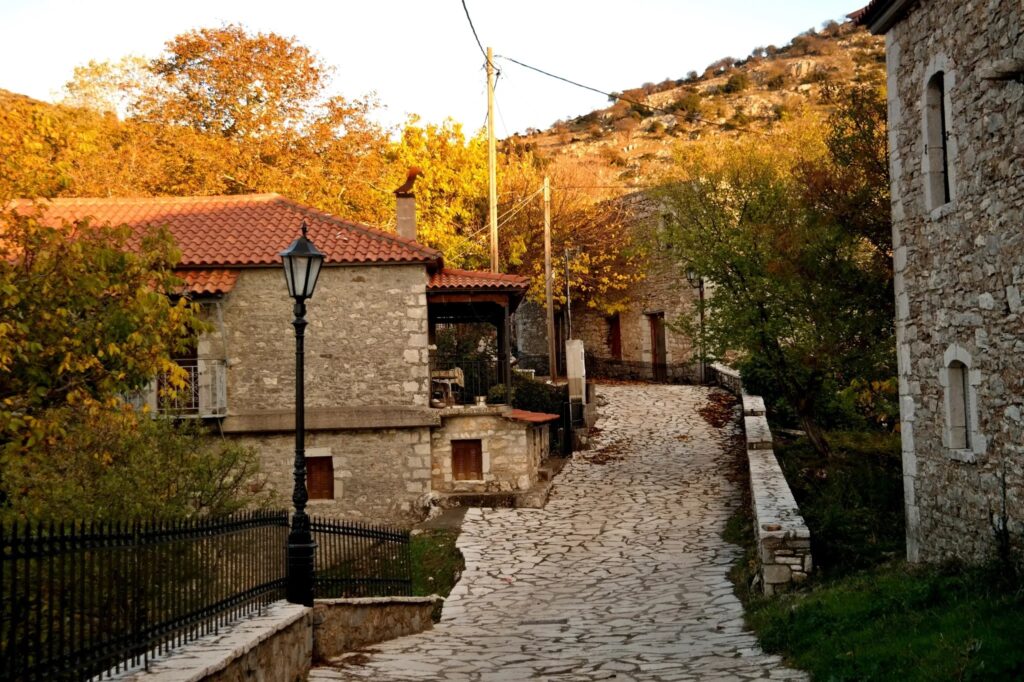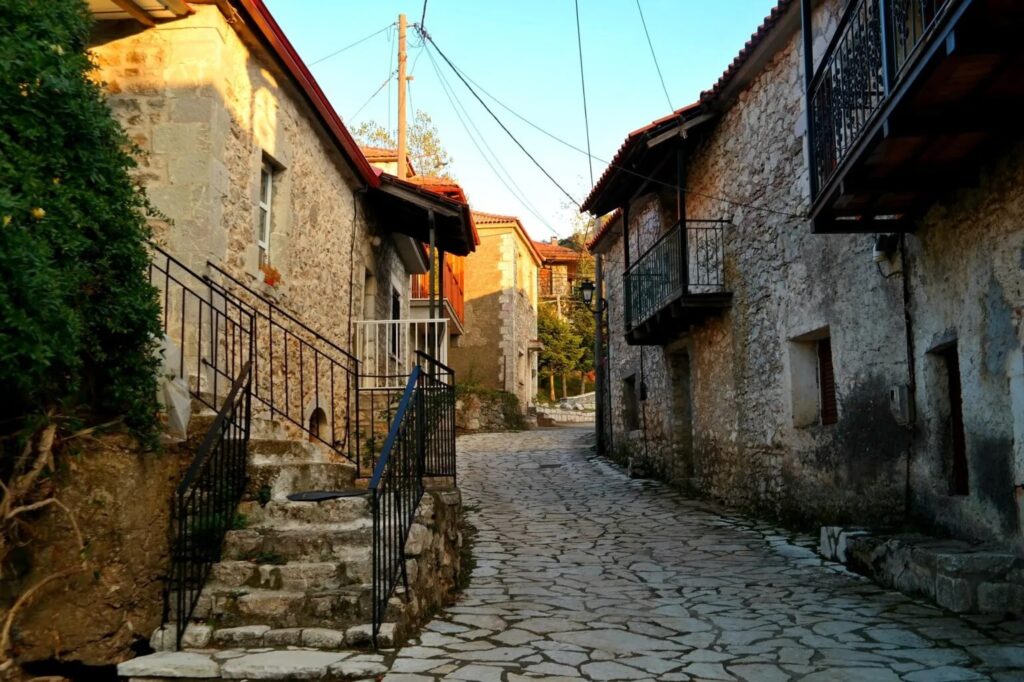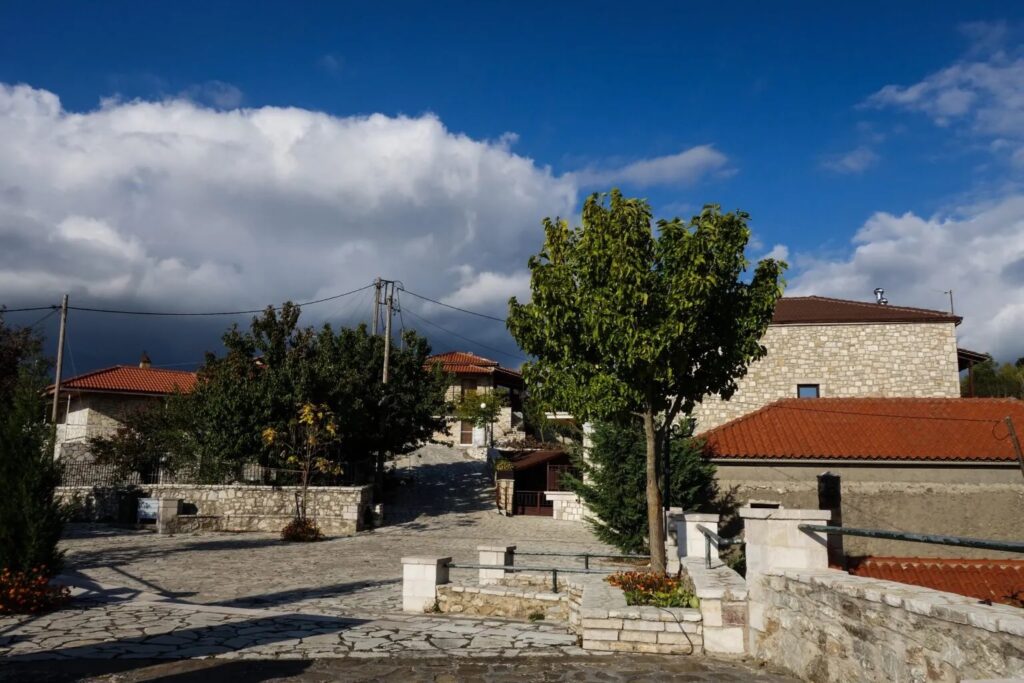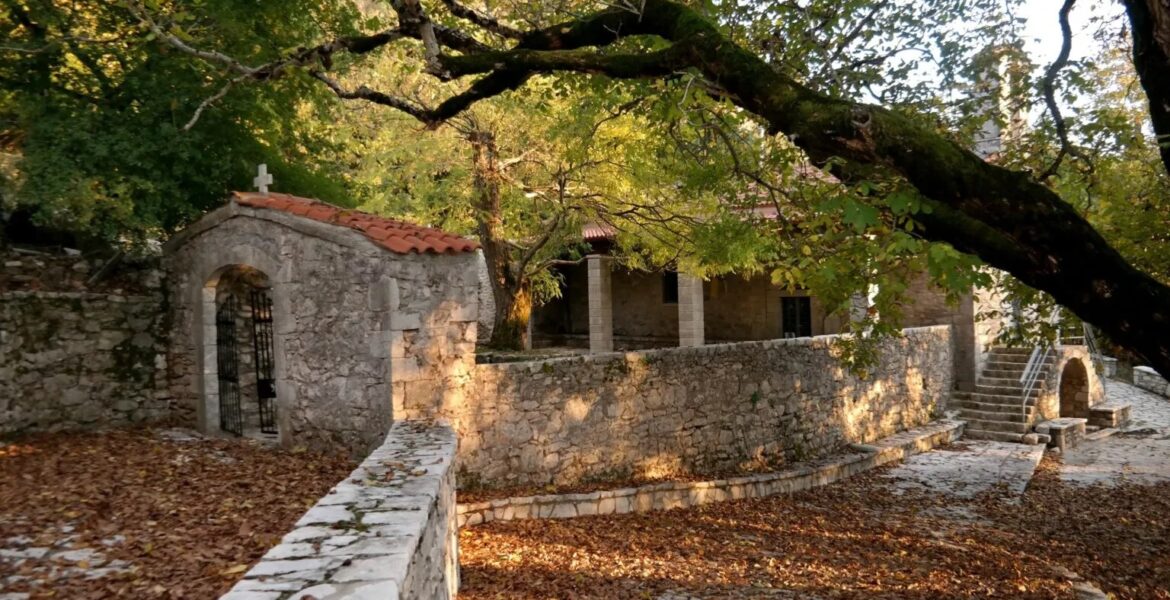Of all the regions of Greece that have become famous travel destinations in their own right over the last 15 years, mountainous Arcadia in the central Peloponnese never ceases to unveil surprises. Even those who regularly relish its landscapes and villages may need to familiarise themselves with some of its more unique corners. Particularly those that maintain their tranquillity while just a breath away from a renowned resort.
A striking example of this wondrous coexistence of developed tourism and discreet havens is the small, as Travel highlights, picturesque village of Vloggos.
It may be located just 9 kilometres west of the famed Dimitsana – one of Arcadia's most notable winter resorts, if not nationwide – but it remains unknown even among those who have often visited the region.
Despite this, Vloggos is a village with an enviable vista, which the locals will proudly tell you is the ‘balcony’ of all of central Peloponnese since, especially on days when the horizon is crystal clear, the gaze can reach as far as the Ionian Sea.
A Quiet, Traditional, Quintessentially Mountainous Settlement

Vloggos is a small village in Gortynia, considered one of the most mountainous in the Peloponnese and all of Greece. It is built at a commanding altitude of 1,060 metres on a plateau of the penultimate peak of Mount Echtitova (as it is known by the locals, officially called Voufagio Oros), an extension of Mt Mainalo.
Furthermore, the entrance to the settlement, locally known as “Karkala,” is measured at 1,182 metres above sea level.
The village has witnessed various fluctuations in its population through recent times: in the 2011 census, for instance, a mere seven permanent residents were recorded, yet in a more recent count in 2021, this number rose to 43.
Notably, the village sees few residents during the harsh winter months – made especially severe by the altitude—the majority return with the welcoming embrace of spring and warmer climes.
Stone houses and cobbled pathways mirror the folk architecture of 19th-century Arcadia. The village's history stretches, somewhat enigmatically, into the depths of time.
Its first recorded mention crops up in 1732 in a document from the nearby Monastery of the Philosopher, leading to suppositions of an even earlier inception.
The exact time of its creation is perhaps related to the etymology of its distinct name, a subject of some debate. Was it initially called ‘Loggos’, eventually becoming ‘Vloggos’ through linguistic decay?
Or does the name derive from a Slavic toponym, potentially dating back to the Slavs' extensive settlement of the Peloponnese between the 6th and 8th centuries? Interestingly, the word ‘loggos’ itself has Slavic roots.
Much of the present-day housing, built predominantly from stone, hails from the 19th century (or perhaps slightly earlier) and stands as striking, well-preserved examples of local folk architecture constructed by artisans from Lagkadinous.
In recognition of its cultural and architectural significance, Vloggos was officially acknowledged as a traditional settlement in 1978, following recommendations from architects of the Aristotle University of Thessaloniki.
During the War of Independence of 1821, it is known that the villagers clashed with the Ottomans of Tripoli.
As previously alluded to, Vloggos captivates those who visit due to the imposing, panoramic views afforded by its lofty altitude. This elevation harmoniously blends with the surrounding mountainous nature (mainly the forest of perennial walnuts) and the village’s traditional homes and pathways.
It emerges as a genuine sanctuary atop the heights of Arcadia, with the view justifying its description as a “balcony” by its inhabitants: one can savour unrestricted views of the Megalopolis basin, Lykaio Mountain, Minthi Mountain and Taygetos whilst the entire valley of Alfios stretches out below. Even the blue of the Ionian Sea faintly traces the horizon on apparent days.
In the serene simplicity of Vloggos, the Church of St. George beckons with a tranquil embrace.
You’ll hear the locals refer to it reverently, officially called the Sacred Temple of Saint George, and its presence here, adjacent to the lush woodland of approximately 100 venerable walnut trees, has been stoically committed since 1815.
Before that, it succeeded another ancient ‘metochi’ (dependency) of the Holy Monastery of John the Baptist, potentially erected in the 16th century.
In the church’s ambient vicinity, rustic nature prevails, yet beneath its course, the crystal-clear, markedly mountainous waters of an ancient spring are cool to the touch and refreshingly straightforward. While here, pay a visit to the charming old Primary School of the village, which operated until 1969.
How to Get There

Vloggos is easily accessible by road and not far from prominent destinations in mountainous Arcadia. While it’s a journey of 68 kilometres from Tripoli, it’s a mere 10 kilometres from Dimitsana and 19 from Stemnitsa. Those who love it tend to stay in these places.
Setting off from Tripoli, three distinct routes could lead you to Vloggos. The most straightforward is the 68-kilometre passage through Vytina, Dimitsana and Zatouna.
However, if you are passionate about adventure and aspire to traverse through fir-draped Mainalo, consider taking the lengthier 98-kilometre route after Vytina leads to Pyrgaki and Elati before emerging in Stemnitsa. From there, a path guides you to Dimitsana and Zatouna, where the village is a mere 6 kilometres further east.
Navigating away from the bustling tourist hubs that mark Mainalo and, more broadly, mountainous Arcadia, Vloggos provides a quiet reprieve, maintaining a gentle, albeit steadfast, embrace.
Should you choose to while away a few days in the tranquillity of this village, “Vloggos Guesthouse” awaits, offering meticulously cared-for rooms within a well-preserved, stone-crafted two-storey house. They can be contacted at (Phone: +30 698 421 4815) for reservations or further inquiries.
Moreover, the village takes pride in its traditional café, doubling delightfully as a small tavern, where one can enjoy the simplicity and sincerity of tasty homemade Greek cuisine. And the amenities?
They are available year-round, as even winter has its charm here. Weather permitting, numerous beautiful hiking trails are beckoning the adventurous.

READ MORE: Karpathos in the six most romantic and sustainable destinations on the planet.


